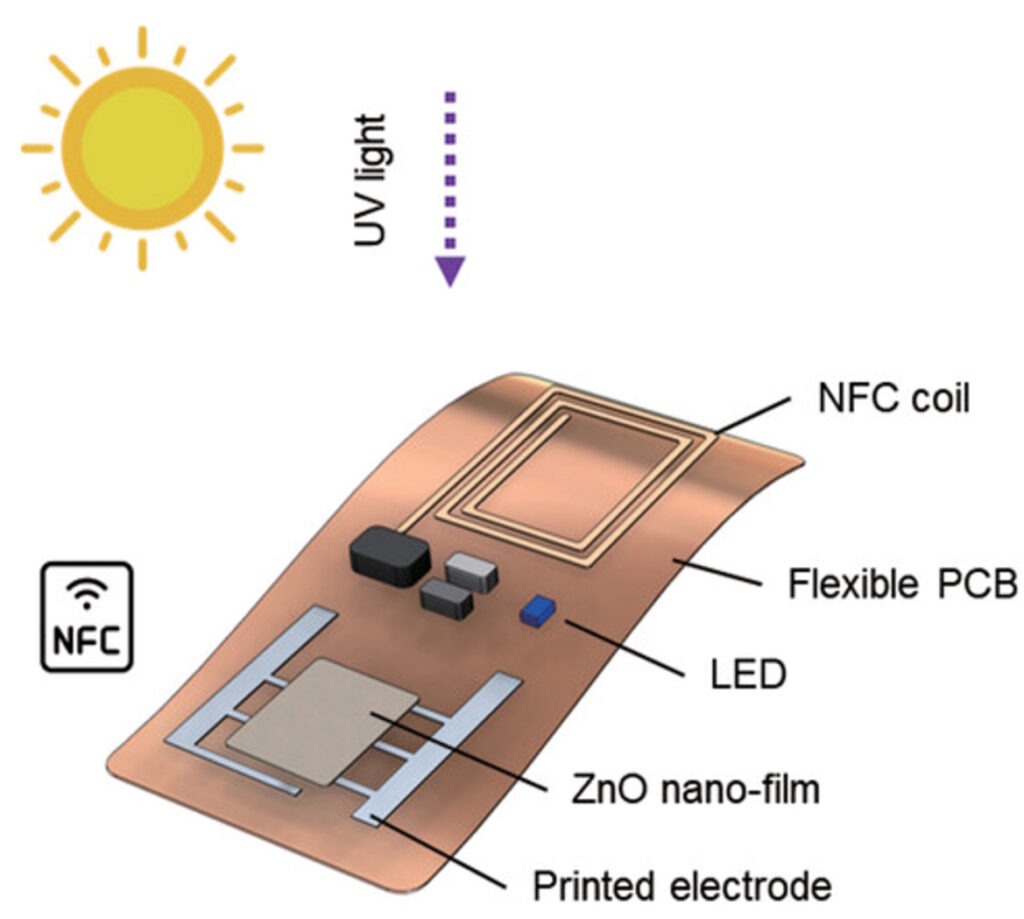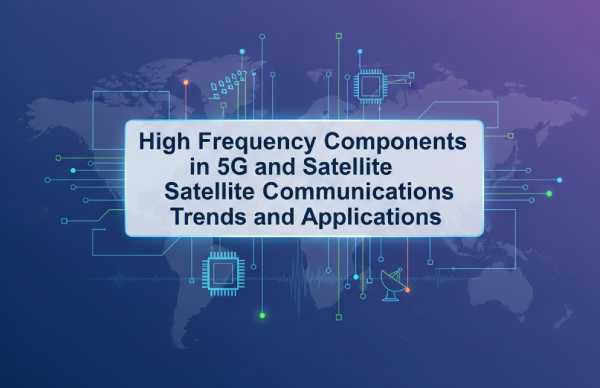Zinc oxide (ZnO) is a common ingredient in sunscreens. Less well known is that it is also a wide band gap (WBG) semiconductor (3.4 eV). As a nanomaterial, ZnO has been used to develop a variety of sensor technologies. ZnO sensor applications include health monitoring, chemical sensing, biomedical and environmental sensors.
Some of the properties of ZnO that make it suitable for sensor applications include low price, low dielectric constant (8.5), high transmittance, good physicochemical stability, high excitation binding energy (60 meV), high electron mobility (200 cm 2 /(Vs), non-toxicity and biocompatibility, good piezoelectric properties, and large surface area to volume ratio.
ZnO nanomaterials can be used in a variety of UV sensors for applications such as biomedical and environmental monitoring, optical communications and defense systems.
Physical Reservoir Computational Sensors
ZnO nanoparticles (NP) have been combined with cellulose nanofibers (CNF) to produce disposable smart optical sensors. These sensors include Physical Reservoir Computing (PRC), which consumes very little power and mimics the human brain. Derived from recurrent neural network theory, PRC fuses sensing and artificial intelligence processing to implement classification and prediction algorithms. PRC is also suitable for processing time series data, which is common in biological signals.
ZnO NP/CNF sensors exhibit gradual changes in photocurrent with sub-second time constants during exposure to UV light. PRC function exhibits paired pulse facilitation (PPF), a short-term, activity-dependent synaptic response. The smart sensor uses sub-second light pulses to perform short-term memory (STM) tasks, parity check (PC) tasks, and handwritten character recognition.
A disposable flexible sensor with integrated PRC functionality was developed (Fig. 1). The device recognized handwritten digits with 88% accuracy. The accuracy of the device remained unchanged after 1,000 bending cycles. The disposability of the device is evident in the fact that it burns as fast as standard office paper.

Figure 1. ZnO NP / CNF sensor (a). Schematic of the measurement setup (b). Photocurrent dynamics from an induced by optical pulse with = 365 nm and 15 s pulse width (c).
Flexible and Printable ZnO NP Photosensor
Direct printing of ZnO NP is challenging. The particles tend to clog the print head and may require high temperature annealing to be effective. A new technique has been developed to print with amine-zinc hydroxide complex precursors instead of ZnO NP. Using an annealing temperature of 250°C, ZnO nanofilms can be formed on flexible polyimide substrates. Adding silver nanoparticles to the ink creates a printed UV flexible sensor with adjustable resistance.
The sensor responds linearly to UV light with an intensity range of 50 to 2000 µW/cm2. The completed sensor assembly is a passive wearable device that detects the intensity of incident UL light and includes near-field communication (NFC) to provide wireless connectivity (Figure 2).

Figure 2. This flexible printed ZnO UV sensor includes NFC connectivity.
More ZnO nanomaterials categories
ZnO nanomaterials can also be used to fabricate highly sensitive and selective electrochemical sensors and biosensors due to their high specific surface area, high catalytic efficiency and strong absorption. ZnO nanomaterials are available in a wide range of sizes and morphologies that can be optimized for specific sensor applications. The four main categories of ZnO nanomaterials include:
Zero-dimensional, including quantum dots and nanoparticles.
One-dimensional, including nanowires, nanoribbons and nanopins.
Two-dimensional, including nanomembranes and nanosheets.
Three-dimensional, including porous materials and nanoclusters.
In addition to the UV sensing uses described above, zinc oxide nanomaterials are suitable for a variety of sensing applications. Some examples include:
Highly sensitive pressure sensors rely on the piezoresistive and piezoelectric properties of ZnO.
Gas sensors utilize the high surface area and piezoresistivity of ZnO nanomaterials to measure gs absorption and corresponding resistivity changes.
Biosensors and environmental monitoring devices can use customized zero-dimensional ZnO nanomaterials to achieve high selectivity and responsiveness.
Summary
ZnO nanomaterials have many properties that make them well suited for sensors and are available in a wide range of sizes and morphologies. With appropriate additional materials, ZnO NPs can be used to fabricate printed sensors and flexible smart sensors.
For more on sensors, check more on our official website: perceptive-ic.com.



























